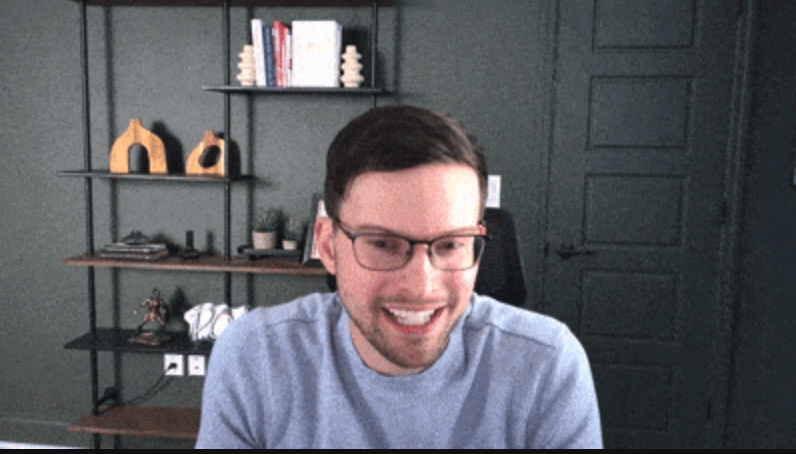Episode Summary
Jason's Background & Product Team Experience
Career Overview: Jason McCarty introduces himself as the founder and principal consultant at Scalarier Agency, highlighting experience across Fortune 500s, development agencies, and as a fractional product leader for founder-led businesses.
Observations on Team Structures: Jason has primarily worked with small to mid-sized organizations and shares how product collaboration and organizational approaches differ by company size.
Product Collaboration: Small vs Large Teams
Collaboration Processes: Jason discusses how small teams usually operate with synchronous communication, allowing for agility and real-time refinement, while larger teams require more formal processes, such as detailed product requirement documents (PRDs) and communication frameworks, to align cross-functional groups.
Organizing Work in Larger Orgs: For larger organizations, work is more often structured around feature sets and capabilities, which increases communication complexity and process overhead.
Preferred Product Management Practices
Scrum vs Kanban: Jason expresses a strong preference for Scrum, citing its benefits for execution and accountability, but notes that strict, template-based applications across diverse teams often fail.
Outcomes over Process: He emphasizes that while Scrum provides a framework, the focus should remain on driving business outcomes, advocating for a mindset shift in junior teams via strategies like including a well-articulated "why" in every ticket.
Instilling a Product Mindset and Vision Alignment
Cultivating Business-Thinking Developers: To foster a product-centric mindset, Jason recommends clearly connecting tasks to business outcomes and ensuring that junior developers routinely see and reflect on the purpose behind their work.
Navigating Unclear Vision: Discusses the difficulty many organizations face with ambiguous vision or roadmaps, and the importance of mature product teams in adapting to ongoing change and learning over static planning.
Defining Product vs Development Teams
Organizational Trends: Jason observes a growing trend in separating product and development teams, though he advocates for having product ownership within the development team for increased empowerment, especially as AI enhances individual capabilities.
Collaboration and Gatekeeping: He highlights the organizational pitfalls when product managers become the sole holders of vision, which can limit collective ownership and collaboration.
Balancing Discovery, Delivery, and Team Health
Discovery Within Engineering: Jason underscores the business value of dedicating a portion of development resources to product discovery and refinement, rather than focusing solely on building features.
Measuring Success: He critiques heavy reliance on velocity and OKRs as narrow metrics, advocating for rolling roadmaps and KPIs oriented toward capability delivery and outcomes rather than just throughput.
Hypothesis-Driven Product Development
From Mandates to Experiments: Highlights the pitfalls of “vibes-based” PRDs and stresses the importance of framing work as testable hypotheses, linking product initiatives to clear expectations, and reviewing progress post-launch.
Building Organizational Learning: Discusses strategies for helping teams and leadership adopt hypothesis-driven development, including codifying expectations and building muscles for experimentation and post-release analysis.
Making Retrospectives and Continuous Improvement Work
Types of Retrospectives: Differentiates between traditional sprint retrospectives focused on process and team dynamics, and “output review” retrospectives centered on evaluating experiment results and learning from launched features.
Collective Knowledge Creation: Suggests that product retrospectives involving both product and development leads build shared knowledge and foster ideation beyond the individual product manager.
Bridging Technical and Non-Technical Gaps
Growing Technical Acumen: Jason shares personal experiences about overcoming a lack of technical depth, recommending broad exposure via development agencies and close collaboration with technical leads.
Product Owner & Technical Leadership: Explains that product owners should focus on framing human-centric problems, while technical leads translate these needs into actionable engineering solutions; healthy collaboration and mutual respect are essential.
Managing Invisible Work and Team Collaboration
Handling Peer Reviews and Hidden Work: Addresses the reality of untracked “helping” activities like code reviews and ad-hoc collaboration, advocating for realistic capacity planning and cautioning against excessive micromanagement through ticketing.
Trust and Team Dynamics: Emphasizes that built-in trust and open communication reduce the need for granular tracking, allowing teams to operate more efficiently and collaboratively.
The Impact of AI on Product Teams and Features
AI in Product Operations: Jason notes that rapid prototyping and AI-powered tools are revolutionizing how quickly teams can deliver and validate concepts, enabling faster customer feedback and iteration.
AI as a Feature: On the product side, he points out key areas where AI is adding value, including search optimization, dynamic pricing, and document processing, but observes that ongoing human oversight remains critical due to the evolving and sometimes unpredictable nature of AI outputs.
Closing: Consulting Offer and Final Thoughts
Scalifyr Agency’s Approach: Jason briefly pitches his firm’s focus on embedding fractional product leaders within development teams to drive efficiency and avoid siloed consultancy.
Last Recommendations: Calls attention to the importance of experimentation, trust, and collective learning as foundations for high-performing product teams in today’s environment.
